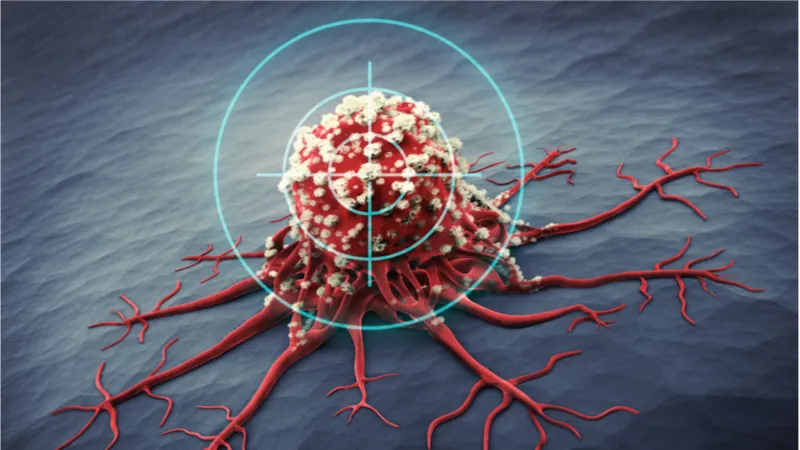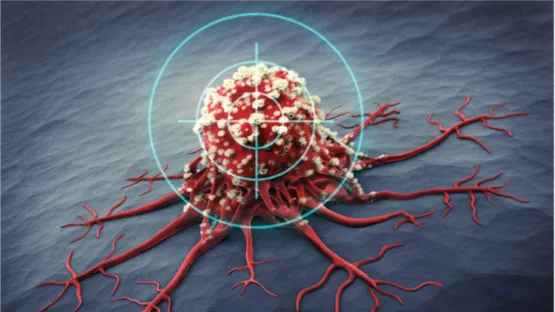A group of researchers have devised an effective anti-cancer therapy by loading cytokine-coding RNA fragments into lipid nanoparticles and injecting them directly into the tumor [1].
Anti-cancer immunotherapy is a powerful novel strategy that has given hope to millions of cancer patients. The immune system has a few aces up its sleeve when fighting cancer, but many types of cancer cells have found ingenious ways to escape its wrath, such as expressing proteins that turn immune cells off. Immunotherapy attempts to neutralize cancer cells’ defenses and amplify the natural immune response to cancer. Yet, it has its limitations: not all cancer patients respond to immunotherapy, and the available immunotherapeutic agents are often expensive and toxic [2].
Three in one
As this paper explains, a truly effective treatment that results in self-sustaining anti-tumor immunity must stimulate three outcomes at once: immunogenic cancer cell death (ICD), inflammation, and immune priming. The researchers claim to have succeeded in packing these three actions into one therapy – even better, into one injection – by creating lipid nanoparticles (LNPs) loaded with self-replicating RNA that codes for the cytokine interleukin-12 (IL-12). The effects of the therapy were confirmed in vivo in mice and in vitro across several types of human cancer cells.
All the elements of this “weapon system” perform their specific roles. The first is the LNP membrane. The lipid formulation that the researchers used to create it is toxic enough to trigger ICD. Empty LNPs injected into the tumor also induced the collapse of the vasculature at the tumor core, suffocating cancer cells there. However, not all cancer cells died from the exposure to LNPs.
Any RNA – but not just any RNA
The second line of attack is the RNA cargo, which works for any kind of RNA. The mere presence of foreign RNA, even non-coding, elicited a response from the cancer cells. When injected into the tumor, LNPs loaded with benign RNA fragments nevertheless led to the activation of toll-like receptors (TLRs). Because TLRs act as an alarm system that induces inflammation, triggers immune response, and helps immune cells discriminate between healthy and cancerous cells, TLR activation has long been a target of anti-cancer research [3, 4]. The increased presence of TLRs recruited the innate immune system by producing large quantities of type 1 interferon. Sensing the interferon, immune cells of various types, such as neutrophils and natural killer (NK) cells, rushed to the site and attacked the tumor. The researchers found that even with this inactive payload, the first two tiers of the therapy combined had a considerable therapeutic effect.
Of course, the RNA cargo is a meaningful component of the system as well. For this role, the researchers chose artificially created, non-viral RNA fragments that rapidly self-replicate and code for IL-12, a powerful stimulator of immune cell activity via the interferon-gamma (IFNγ) pathway [5]. Even simple intratumoral injection of IL-12 is known to elicit a strong anti-cancer immune response, and many researchers are currently looking for better ways of delivering IL-12 to tumors. LNPs loaded with IL-12-coding RNA apparently did the job well, creating a burst of IL-12 production in cancer cells that greatly enhanced the treatment’s effect. To understand which type of immune cells was instrumental for this final push, the researchers depleted one cell type at a time until they found that IL-12 production triggered dendritic cells (DCs), which are especially good in antigen presentation, to migrate towards the tumor. As a result, swarms of DCs presented cancer antigens in tumor-draining lymph nodes, priming T cells and facilitating a prolonged anti-cancer effect.
How systemic is the response?
Since the therapy elicited a systemic anti-tumor response, the researchers were hopeful that it would be able to affect other tumors that were not directly treated. To check this hypothesis, the researchers treated one flank of mice that had tumors in both flanks. Both tumors were indeed affected by the therapy, especially when combined with checkpoint inhibition treatment (anti-PD1 therapy).
What about metastasizing tumors? To simulate metastasizing, the researchers injected cancer cells into the bloodstreams of mice along with introducing tumors. Untreated mice developed metastases in the lungs, but the treated ones fared much better. Alhough the treatment was not as effective in this case as it was against individual tumors, it still led to greatly improved outcomes.
In summary, we demonstrate here a potent single-agent multifactorial strategy for in situ vaccination of tumors, employing a synthetic nanoparticle formulation consisting of engineered self-replicating RNAs delivered by an immunogenic cell death-inducing LNP. By combining rapid ICD induced by the LNP, innate immune stimulation and transient payload gene expression from the replicon RNA, a cascade of rapid TME (tumor microenvironment) remodeling and antigen presentation is induced.
Conclusion
The researchers achieved highly promising results by packing three anti-cancer effects into a synergetic treatment using cutting-edge technology: lipid nanoparticles and artificially created self-replicating RNA fragments. This approach allows for highly targeted delivery. Tumor regression was achieved following a single injection, which is a major success in the vibrant and rapidly developing field of cancer immunotherapy.
Literature
[1] Li, Y., Su, Z., Zhao, W., Zhang, X., Momin, N., Zhang, C., … & Weiss, R. (2020). Multifunctional oncolytic nanoparticles deliver self-replicating IL-12 RNA to eliminate established tumors and prime systemic immunity. Nature Cancer, 1(9), 882-893.
[2] Galluzzi, L., Chan, T. A., Kroemer, G., Wolchok, J. D., & López-Soto, A. (2018). The hallmarks of successful anticancer immunotherapy. Science translational medicine, 10(459).
[3] Kaczanowska, S., Joseph, A. M., & Davila, E. (2013). TLR agonists: our best frenemy in cancer immunotherapy. Journal of leukocyte biology, 93(6), 847-863.
[4] Cen, X., Liu, S., & Cheng, K. (2018). The role of toll-like receptor in inflammation and tumor immunity. Frontiers in pharmacology, 9, 878.
[5] Ni, L., & Lu, J. (2018). Interferon gamma in cancer immunotherapy. Cancer medicine, 7(9), 4509-4516.




